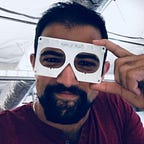HADOKEN!!! You’ve always wanted to throw one. Do it in VR!
One of the best byproducts of building a livestream tutorial on fireball prototypes was having Street Fighter chiptunes and Dragon Ball Z themes stuck in our heads for a week. Even more, the prototype process brought up three areas of design tips. Check out our steam for details, but here’s a summary of what we found interesting:
- Using particle textures to create a sense of depth.
- Bringing an energy source to life with light.
- Combining audio and haptics.
To use particle textures for depth, we found that the quantity and motion of texture sprites are critical. A YouTube search showed endless examples of 2D texture-based fireballs. One video even shows how to recreate an entire Street Fighter game! To create the illusion of a 3D fireball, however, we thought we may need a 3D mesh. Fortunately, taking a chance on an implementation we found from a fellow Youtuber worked wonders. The implementation emits 2D sprites in a sphere, overlaps the sprites on top of each other, and rotates the sprites randomly. The result is the illusion of a living fireball created entirely from 2D sprites!
During the livestream, an unplanned extension showed the value of using lights to make energy sources feel more alive. For our fireball, we assigned a light to the particle system so we could see dynamic lighting effects as fireballs flew. The result was too subtle to change the entire experience but substantial enough to be worthwhile. When working with moving objects serving as energy sources, add a light to bring the objects to life!
Our favorite design points came from using haptics as a hint for fireball behavior and tightly coupling haptics with audio. Varying the controller vibration for one- and two-handed fireballs added intuition for how fireballs differed physically. As for audio, we’ve learned it’s critical to make vibrations feel as if they are emanating from an audio source. Practically, that means using subtle vibrations (don’t immediately jump to the highest values, most people overdo haptics) and making audio effects loud enough to drown out the noises of controller vibrations.
We never thought we’d throw fireballs like our favorite characters in Street Fighter or Dragon Ball Z. Thanks VR! Thanks for reading this far and, if you enjoy our videos, please consider leaving a like, subscribing, and building your own projects. Extra shout out to devPuppy Inc for riffing on our livestream to create an extended fireball!
Happy building!
